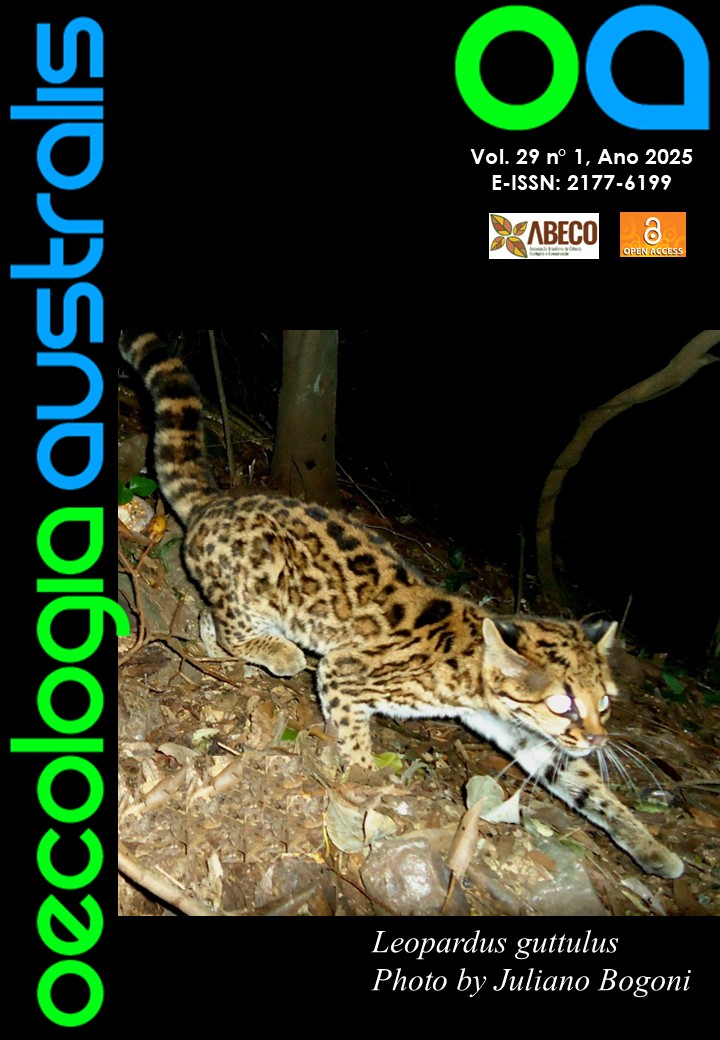FIRST RECORD OF Rhizosolenia setigera (COSCINODISCOPHYCEAE, BACILLARIOPHYTA) BLOOM IN A TROPICAL URBAN COASTAL LAGOON AND EFFECTS ON THE ZOOPLANKTON COMMUNITY
Rhizosolenia setigera bloom in tropical coastal lagoon
DOI:
https://doi.org/10.4257/oeco.2025.2901.08Abstract
Interactions with the sea are frequently important in coastal lagoons surrounded by urban areas, but besides improving water quality the connection with the sea can bring marine organisms to the lagoonal ecosystem. We present here an unprecedentedly high density (up to 7.5 x 106 cells L-1) of the marine diatom Rhizosolenia setigera (Bacillariophyceae, Centrales) for four weeks in a Brazilian urban coastal lagoon, which is normally dominated by picocyanobacteria. Rhizosolenia setigera formed mats around the marginal area of the lagoon and affected the zooplankton community. As R. setigera is included among marine diatoms considered harmful and can synthesize highly branched isoprenoid alkenes (HBI), cell pellets were harvested during the bloom for analysis, but these compounds were not detected. Our findings highlight that even a short-term bloom of a marine diatom can render consequences upon the resident zooplankton community, possibly with cascading effects on other components of the local trophic web.


